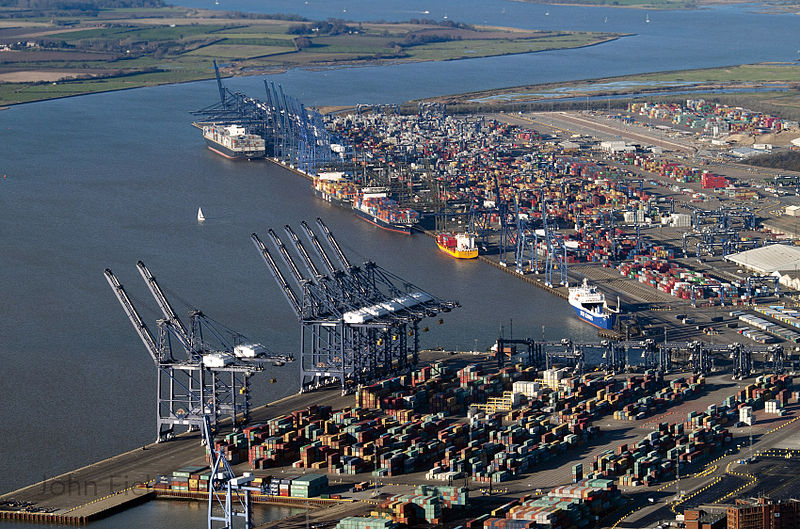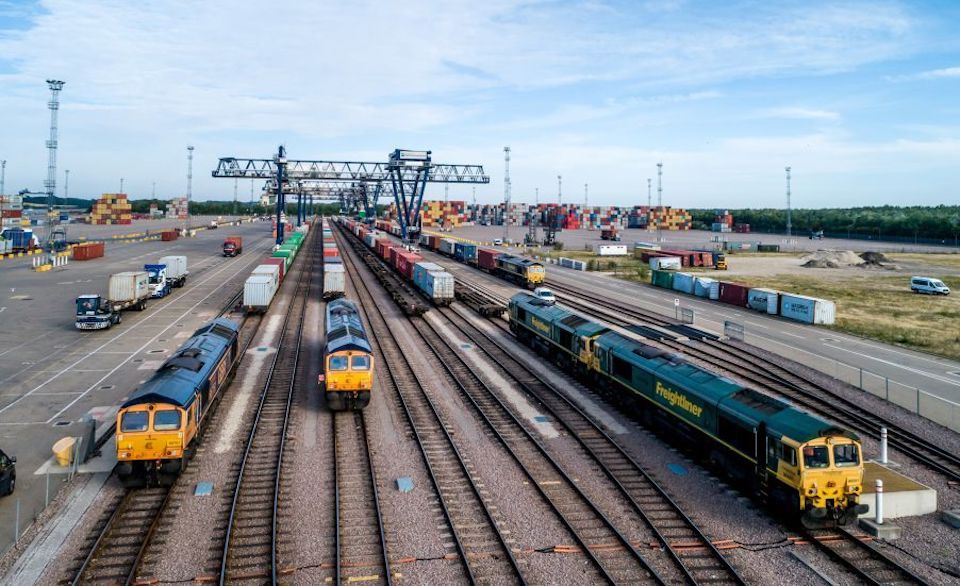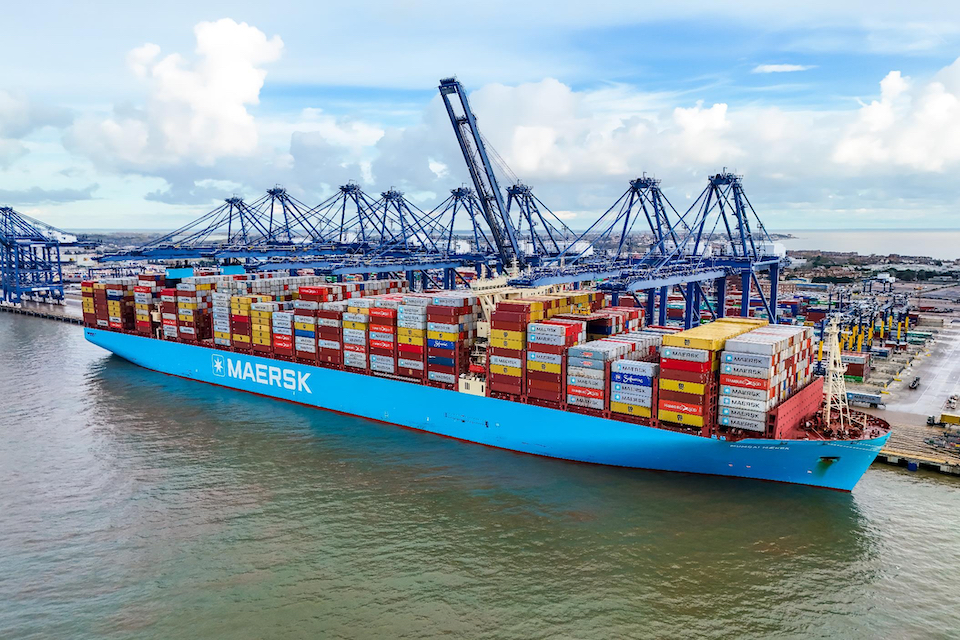A deeper Felixstowe poses challenges for rail freight

The Port of Felixstowe, Britain’s busiest intermodal port and rail freight terminal, just got bigger. Work has been completed to deepen the approach channels and two berths. That will allow the port to welcome more of the largest container vessels afloat. Those improvements mean a whole shipload of extra containers arriving at the Suffolk port. That is a pleasant headache for rail freight handlers.
In a significant development, Hutchison Ports Felixstowe has completed a major dredging project, deepening the main approach channel and Berths eight and nine. These maritime improvements have been made to enhance access for the world’s largest container ships. The announcement was made during the maiden call of the OOCL Felixstowe, a 24,188 TEU container vessel. It marks a milestone in the port’s commitment to handling the latest generation of mega vessels. The challenge for rail freight is to handle all that extra capacity onshore.
Vital for UK ability to trade
On the face of it, this is a maritime project. However, the broader implications for logistics handling involve all the onshore handling as well. The dredging project has increased the depth of the approach channel from 14,5 meters to 16 meters, and the Berths (numbered eight and nine) have gone from 16 meters to 18 meters below chart datum. In land-lubber terms, that’s “was deep; is now very deep indeed”. Robert Ashton, Chief Operating Officer of the Port of Felixstowe, expressed the significance of this project, stating, “It provides levels of access that are unequalled anywhere else in the UK.”

The OOCL Felixstowe (of the Orient Overseas Container Line) was among the first ships to benefit from the deeper channel, but the works are to enable even more massive visitors, like the Maersk Mumbai – a ship capable of carrying more value in one laid than the GDP of several small countries. The enhancements not only accommodate larger vessels but also improve berthing windows and increase the number of ultra-large vessels that can enter or leave the port on each high tide.
Implications for rail freight handling
The trajectory in container ship design is for ever greater capacity. This development was not just a case of keeping up with ports around the world; it’s vital for the UK’s ability to trade and also for Felixstowe to remain competitive in the European market. Only last week, Antwerp’s port authority announced improved rail handling procedures, and one need only look to the decline at Hamburg, where rail traffic is in reverse, to see the warnings of standing still in this highly competitive market.

Deepening Felixstowe’s channels has immediate implications for rail freight handling at the port. With the ability to accommodate larger vessels, the influx of intermodal containers is expected to rise. If that traffic is not to be lost to road carriers, rail freight operations would have to handle this additional traffic without further railway infrastructure enhancement. The potential surge in container traffic may pose challenges to the efficiency of rail freight operations. There’s not much slack or idle time at Felixstowe and, in port operations, more than anywhere else – time is money.
Rail freight operations may face the need for enhancements to keep pace with the growing demand. There is the welcome prospect of more capacity on the approaches to the port, particularly the junctions around Ely, but these will take years to implement. The deepening of sea channels at Felixstowe, while part of the port’s commitment to accommodating larger vessels, prompts a question about the readiness of rail infrastructure in the UK in general to handle the surge in intermodal containers. As with so much current infrastructure development, the net-zero implications are evident. The coming months are likely to witness an evaluation of rail freight capabilities and potential upgrades to ensure the efficiency of this busy component of the UK’s trade network.
You just read one of our premium articles free of charge
Want full access? Take advantage of our exclusive offer





